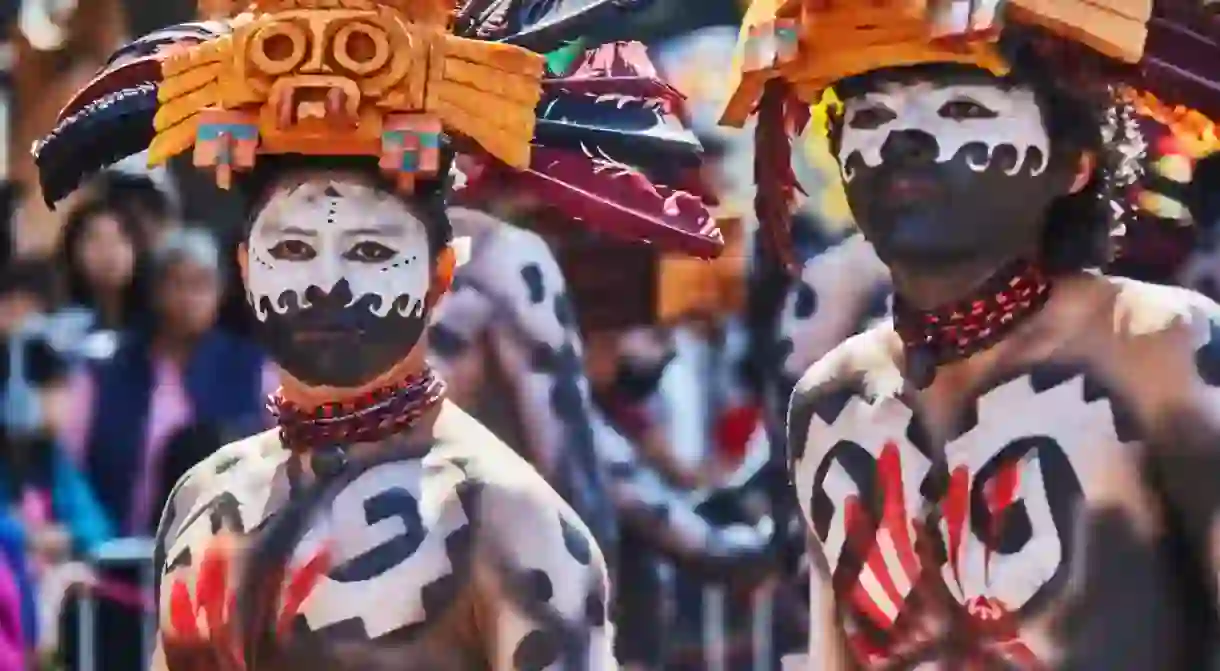The Day of the Dead: Mexico's Mysterious Holiday

In Mexico each year in October and November, the dead are said to come back to visit the land of the living. In many communities, people mark the occasion by celebrating the lives of those have passed away. But in the towns of Pátzcuaro and San Andrés Mixquic, locals have turned the festival of death into a raucous, hallowed celebration of life.
The Mexican festival Día de Muertos traditionally takes place over three days, starting on the 31st of October. As with most ritual celebrations of death and the underworld, the festival’s origins go back hundreds, perhaps even thousands of years. We know rituals were performed by the pre-Columbian civilizations, including the Aztecs, the Mayans, the P’urhépecha, the Olmecs, and the Totonacs, as far back as three thousand years.
The Aztecs, always a civilization for grandeur, dedicated an entire month to the celebrations, and revered the goddess Mictecacihuatl or ‘Lady of the Dead’ above all other gods. Elements of these ancient celebrations have remained in contemporary incarnations; To many, the goddess Mictecacihuatl can be seen in the striking face of La Catrina. In 1913 Artist José Guadalupe Posada created the zinc etching ‘La Calavera Catrina’ as a satirical portrayal of the Mexican upper classes. The image, however, was so well received that it became the unofficial image for the Day of the Dead.

Not to be confused with Halloween, the Aztecs originally celebrated death in the Americas sometime in August; However, Spanish colonists changed the date to correspond with the Christian festival of All Hallows’ Eve. Though some commercial elements of Halloween have infringed on Mexico, the indigenous festivities are happily experiencing revival. This year in Mexico City, fans of the festival set a new world record for the most Catrinas in one place at one time.
But the holiday is not just about the festival itself. Preparations begin weeks, and sometimes months, in advance. Holiday altars known as ofrendas, which feature the favoured possessions and food of the deceased and are decorated in bight colours, are created to guide the dead back to their homes. A special sweet bun, known locally as Pan de Muerto, is made for the occasion and are usually adorned with images of crossbones.

Though the build-up to the celebrations can last months, the days themselves each have their own rituals and significance. November 1st is dedicated to deceased children, and is known as the Day of the Innocents or Day of the Little Angels. Toys and sweets are piled upon gravestones and on altars within houses to coax the children back home for one night of the year.
November 2nd is the Day of the Dead, which is when all souls return to their families, villages, towns, and cities. Vigils are held in cemeteries throughout the night, where families gather to burn the tree resin copal, which has been used as incense since pre-Columbian times. Graves are adorned with candy skulls, food, drink, and cempasúchil, orange marigolds known as the Flowers of the Dead.

Though celebrations occur throughout the country, there are a number of specific places that are worth visiting. Oaxaca, the capital city of the southern state of the same name, plays host to a spirited and dramatic carnival. But perhaps the two towns that are most famous for their celebrations are Pátzcuaro in the state of Michoacán and San Andrés Mixquic in Mexico City.

Pátzcuaro
As the sun sets on Lake Pátzcuaro on November the 1st, cemeteries on the banks of the lake light up with candles, which will continue burning until dawn. The spectacle truly begins as wooden rowboats push off into the placid water, carrying families, flowers, and the flicker of ever more flames with them, like a giant flotilla out to meet the mythical creature Charon and his ferry halfway. The sight of the lake and its illuminated surroundings, with chanting emanating from across the water, is itself a ghostly experience. During the day, market stalls in Pátzcuaro sell food, handicrafts, and traditional wares associated with the Day of the Dead; expect bright colours, Pan de Muerto, and of course, plenty of skulls.

San Andrés Mixquic in Distrito Federal (Mexico City)
Located a two-hour drive south from downtown Mexico City, San Andrés Mixquic is still considered part of the vast sprawl that is the country’s capital. The Day of the Dead is the town’s largest annual celebration, with preparations going on for the months before November. The cemetery of the San Andres Apostol Church is the focus of the action. Families gather at the headstones of their relatives, fanning braziers to conjure up rivers of smoke that drift slowly into the sky.

To reach the graveyard, throngs of locals and visitors squeeze around the perimeter of the church, with a high wall on one side and wreathed headstones on the other. Pressing agains the masses, one gets the impression that the people are in fact souls that have passed over, on their way to a rendezvous with the Lady of the Dead. The jolting, bustling journey around the cemetery harks of Ingmar Bergman’s dancing troupe in The Seventh Seal, as they dance the Dance of Death on the faraway hilltop.
By Sasha Frost













